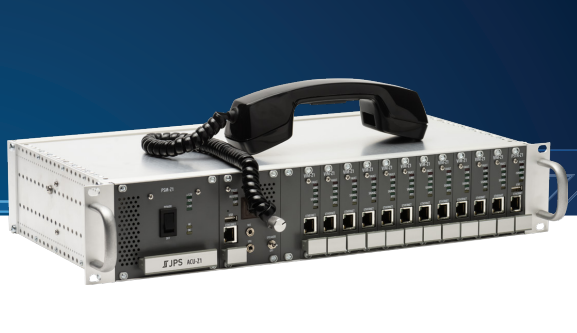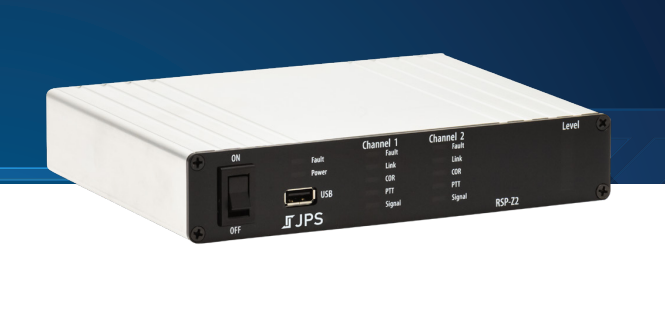battlefield communications
military communications
military telephone network
armycomms, asteriskpbx, commandcontrol, emergencycommunications, FieldCommunications, fielddeployable, freepbx, hdvoice, ipphones, iptelephony, lancommunications, militarycommunications, militaryinfrastructure, militarynetworks, militarytech, mobilecommand, offlinepbx, pbxsystem, remoteoperations, ruggedtech, securecommunications, securevoip, tacticalnetworks, tacticalvoice, voip
9M2PJU
0 Comments
Building Offline IP Phone Networks for Military Field Operations: Complete Setup Guide
Military exercises in remote locations often lack reliable internet connectivity, yet secure voice communications between camps, command posts, and mobile units remain critical. Traditional radio communications have limitations in range, clarity, and scalability. Enter offline IP telephony – a game-changing solution that provides crystal-clear voice communications over local area networks without requiring internet connectivity.
Understanding Offline IP Telephony
What is an Offline IP Phone System?
An offline IP phone system operates on a Private Branch Exchange (PBX) that functions entirely within a local network. Unlike traditional phone systems that require connection to telephone companies or internet services, an offline PBX creates its own telecommunications infrastructure using:
- Local PBX server (hardware or software-based)
- IP phones connected via Ethernet
- Network switches and routers for connectivity
- Point-to-point wireless links for camp-to-camp connections
Key Advantages for Military Operations
Operational Security (OPSEC):
- No external internet dependency
- Communications remain within controlled network
- Reduced electronic signature and interception risk
- Complete control over voice traffic routing
Scalability & Flexibility:
- Support for 10-1,000+ users per system
- Easy addition of new camps or units
- Mobile deployment capability
- Integration with existing radio systems
Cost Effectiveness:
- No monthly telecom bills
- Reusable equipment across exercises
- Lower total cost of ownership vs. satellite phones
- Reduced logistics footprint
Audio Quality:
- HD voice quality (8 kHz to 48 kHz sampling)
- No compressed mobile network artifacts
- Consistent quality regardless of distance
- Background noise suppression
System Requirements Analysis
Network Infrastructure Requirements
Bandwidth Calculations
Voice Codec Requirements:
- G.711 (standard): 64 kbps per call + overhead = ~80 kbps
- G.722 (HD voice): 64 kbps per call + overhead = ~80 kbps
- G.729 (compressed): 8 kbps per call + overhead = ~25 kbps
Example: 50 concurrent calls using G.711
Total bandwidth needed: 50 × 80 kbps = 4 Mbps
Network Latency Requirements
- Excellent: <50ms end-to-end delay
- Good: 50-150ms (acceptable for most operations)
- Poor: >150ms (noticeable delay, impacts operations)
- Unacceptable: >300ms (conversation becomes difficult)
Power Requirements
Typical Power Consumption:
- IP Phone: 3-7W (PoE powered)
- Network Switch (24-port): 15-25W
- PBX Server: 50-200W (depending on capacity)
- Wireless Bridge: 8-15W per unit
Total for 100-user system: ~500-800W
Environmental Considerations
Temperature Range
- Standard IP phones: 0°C to 40°C operating
- Ruggedized models: -20°C to 60°C operating
- Industrial PoE switches: -40°C to 75°C operating
- Server equipment: 5°C to 35°C (requires climate control)
Humidity & Dust Protection
- IP65-rated outdoor equipment for exposed installations
- Sealed enclosures for servers in dusty environments
- Corrosion-resistant connectors for coastal operations
Equipment Selection Guide
1. PBX Server Options
Software-Based Solutions
Asterisk (Open Source)
- Cost: Free (hardware + support costs)
- Capacity: 100-5,000+ users depending on hardware
- Features: Full PBX functionality, recording, voicemail
- Hardware: Standard server or mini-PC
- Pros: Highly customizable, no licensing fees
- Cons: Requires Linux expertise for setup/maintenance
FreePBX (Asterisk GUI)
- Cost: Free base, paid modules available
- Capacity: 25-unlimited users
- Features: Web-based management, auto-provisioning
- Hardware: Dedicated server or VM
- Pros: Easier management than pure Asterisk
- Cons: Still requires technical knowledge
3CX (Commercial)
- Cost: $175-400 per year (25-250 users)
- Capacity: 4-unlimited users
- Features: Web management, mobile apps, CRM integration
- Hardware: Windows/Linux server or VM
- Pros: Professional support, easy setup
- Cons: Licensing costs, internet activation required
Hardware Appliances
Sangoma PBXact
- Cost: $1,500-15,000 (25-500 users)
- Capacity: 25-2,000+ users
- Features: Pre-configured FreePBX, hardware optimized
- Pros: Plug-and-play deployment, vendor support
- Cons: Higher upfront cost, vendor lock-in
Grandstream UCM Series
- Cost: $500-4,000 (50-3,000 users)
- Capacity: 50-3,000 users
- Features: Built-in conferencing, recording, fax
- Pros: Good price/performance, easy management
- Cons: Limited customization options
2. IP Phone Selection
Basic Models (Suitable for General Use)
Grandstream GXP1610/1615
- Cost: $35-45 per phone
- Features: 1-2 lines, basic LCD, PoE
- Use case: Enlisted personnel, basic communications
- Pros: Very affordable, reliable
- Cons: Limited features, small display
Yealink T21P E2
- Cost: $55-65 per phone
- Features: 2 lines, 132×64 LCD, PoE
- Use case: Standard office/tent installations
- Pros: Good build quality, easy provisioning
- Cons: No advanced features
Mid-Range Models (Officer/Staff Use)
Yealink T46S
- Cost: $140-160 per phone
- Features: 16 lines, color LCD, USB, Bluetooth
- Use case: Command staff, operations centers
- Pros: Rich features, excellent audio quality
- Cons: Higher power consumption
Grandstream GXP2170
- Cost: $180-200 per phone
- Features: 12 lines, color LCD, Wi-Fi, Bluetooth
- Use case: Senior staff, mobile command posts
- Pros: Wireless capability, advanced features
- Cons: Complex configuration options
Ruggedized Models (Field Use)
Algo 8180 Audio Alerter
- Cost: $400-500 per unit
- Features: IP65 rating, -40°C operation, loud speaker
- Use case: Outdoor installations, harsh environments
- Pros: Weatherproof, extreme temperature operation
- Cons: Higher cost, limited phone features
CyberData VoIP Outdoor Intercom
- Cost: $600-800 per unit
- Features: IP66 rating, built-in strobe, door control
- Use case: Gate/perimeter communications
- Pros: Military-grade construction, integrated security
- Cons: Expensive, specialized use case
3. Network Infrastructure
PoE Switches (Power over Ethernet)
TP-Link TL-SG1024P
- Cost: $200-250
- Specifications: 24 ports, 370W PoE budget
- Capacity: Powers 24 standard IP phones
- Use case: Small camp (25-50 users)
Ubiquiti USW-Pro-24-PoE
- Cost: $500-600
- Specifications: 24 ports, 400W PoE++, managed
- Capacity: Powers 24 phones + wireless APs
- Use case: Medium camp (50-100 users)
Cisco Catalyst 9300
- Cost: $3,000-5,000
- Specifications: 24/48 ports, 715W PoE, enterprise features
- Capacity: High-density deployment with advanced management
- Use case: Large base/HQ (200+ users)
Wireless Bridge Equipment (Camp-to-Camp Links)
Ubiquiti airMAX NanoBeam AC
- Cost: $180-220 per pair
- Range: Up to 15 km line-of-sight
- Throughput: 450+ Mbps
- Use case: Short to medium range camp connections
MikroTik Wireless Wire
- Cost: $600-700 per pair
- Range: Up to 1.5 km
- Throughput: 1+ Gbps
- Use case: High-bandwidth, short-range links
Cambium PTP 700
- Cost: $2,500-3,500 per pair
- Range: Up to 80 km
- Throughput: 350+ Mbps
- Use case: Long-range base-to-remote site connections
Network Architecture Design
Single Camp Setup (50 Users)
Network Topology:
Internet/WAN (Optional)
|
[Router/Firewall]
|
[Core Switch 48-port PoE]
|
[PBX Server] + [IP Phones × 50]
Equipment List:
- PBX Server: FreePBX on mini-PC ($800)
- Core Switch: 48-port PoE switch ($800)
- IP Phones: 50× Yealink T21P ($2,750)
- Router: MikroTik hAP ax³($200)
- UPS: 1500VA UPS for critical equipment ($300)
- Total Cost: ~$4,850
Network Configuration:
Network Segment: 192.168.10.0/24
PBX Server: 192.168.10.10
IP Phones: 192.168.10.100-149 (DHCP reservation)
Management: 192.168.10.1 (router)
Multi-Camp Setup (3 Camps, 150 Total Users)
Network Architecture:
[Main Camp - 75 users]
|
[Wireless Bridge] ←→ [Camp Alpha - 50 users]
|
[Wireless Bridge] ←→ [Camp Bravo - 25 users]
Main Camp (Command/HQ)
- PBX Server: Asterisk on server hardware
- Network: 192.168.10.0/24
- Extensions: 1000-1074 (75 users)
Camp Alpha (Forward Operating Base)
- Local Switch: 48-port PoE
- Network: 192.168.20.0/24 (routed via wireless bridge)
- Extensions: 2000-2049 (50 users)
Camp Bravo (Support Base)
- Local Switch: 24-port PoE
- Network: 192.168.30.0/24 (routed via wireless bridge)
- Extensions: 3000-3024 (25 users)
Redundancy & Failover Design
PBX Server Redundancy
Primary PBX: 192.168.10.10
Backup PBX: 192.168.10.11 (standby mode)
Failover mechanism:
- Heartbeat monitoring between servers
- Automatic IP address takeover
- Shared storage for configurations
- 30-second maximum failover time
Network Path Redundancy
Primary Link: 5 GHz wireless bridge
Backup Link: 2.4 GHz wireless bridge (different path)
Failover: Automatic routing protocol (OSPF/EIGRP)
Step-by-Step Setup Guide
Phase 1: PBX Server Installation
FreePBX Installation (Recommended for Military Use)
Step 1: Server Preparation
# Download FreePBX Distro (based on CentOS)
# Burn to USB drive or DVD
# Boot server from installation media
# System Requirements:
CPU: Intel i3 or equivalent (minimum)
RAM: 4GB (8GB recommended for 100+ users)
Storage: 160GB SSD (500GB for call recording)
Network: Dual Gigabit NICs (redundancy)
Step 2: Network Configuration
# Set static IP address
nmtui
# Configure: 192.168.10.10/24
# Gateway: 192.168.10.1
# DNS: 192.168.10.1, 8.8.8.8
# Test connectivity
ping 192.168.10.1
ping 8.8.8.8 # Optional if internet available
Step 3: FreePBX Initial Setup
# Access web interface
https://192.168.10.10
# Initial configuration wizard:
1. Set admin password
2. Configure system timezone
3. Set up first SIP trunk (skip if offline-only)
4. Create extension template
5. Configure voicemail settings
Phase 2: Extension Configuration
Bulk Extension Creation
# Create extension range for Camp Alpha (50 users)
Extensions: 2000-2049
Secret: Auto-generated strong passwords
Voicemail: Enabled
Recording: Optional (storage considerations)
Extension Template Settings
Device Options:
- DTMF Mode: RFC2833
- Audio Codecs: ulaw, alaw, g722 (HD voice)
- Video Support: Disabled (bandwidth conservation)
- NAT: Yes (for wireless bridge scenarios)
Advanced Options:
- Qualify: Yes (connection monitoring)
- Call Limit: 2 (prevent phone hogging)
- Busy Level: 1 (proper busy indication)
Phase 3: Network Switch Configuration
VLAN Setup for Traffic Separation
VLAN 10: Voice traffic (QoS priority)
VLAN 20: Data traffic (normal priority)
VLAN 99: Management (restricted access)
Port Configuration:
Ports 1-24: Access VLAN 10 (IP phones)
Ports 25-48: Access VLAN 20 (data devices)
Uplink: Trunk (all VLANs)
Quality of Service (QoS) Configuration
Priority Queues:
1. Voice (DSCP 46): Highest priority, 10% bandwidth guarantee
2. Call Signaling (DSCP 24): High priority, 5% bandwidth
3. Data: Normal priority, remaining bandwidth
Rate Limiting:
- Voice calls: 80 kbps per active call
- Total voice traffic: 50% of link capacity maximum
Phase 4: Wireless Bridge Setup
Point-to-Point Bridge Configuration
Main Camp Bridge (Master)
Device: Ubiquiti NanoBeam AC Gen2
IP Address: 192.168.1.10
Mode: Bridge (Master)
Frequency: 5.8 GHz
Channel Width: 80 MHz
Output Power: 23 dBm (max allowed)
Remote Camp Bridge (Station)
Device: Ubiquiti NanoBeam AC Gen2
IP Address: 192.168.1.11
Mode: Bridge (Station)
Connect to: Main Camp Bridge MAC address
Authentication: WPA2-AES with strong passphrase
Bridge Alignment & Testing
# Signal strength targets:
Excellent: -50 dBm or better
Good: -60 dBm (suitable for voice)
Poor: -70 dBm (data only)
Unusable: -80 dBm or worse
# Throughput testing:
iperf3 -c remote_camp_ip -t 60 -i 5
# Target: >10 Mbps for 50 concurrent calls
Phase 5: IP Phone Provisioning
Auto-Provisioning Setup
<!-- Phone configuration template -->
<YealinkIPPhoneConfig>
<Server>
<PrimaryServer>192.168.10.10</PrimaryServer>
<BackupServer>192.168.10.11</BackupServer>
</Server>
<Authentication>
<Username>$MAC</Username>
<Password>$EXTENSION_SECRET</Password>
</Authentication>
<Features>
<VoiceMail>*97</VoiceMail>
<EmergencyNumber>911</EmergencyNumber>
<OperatorNumber>0</OperatorNumber>
</Features>
</YealinkIPPhoneConfig>
Manual Phone Configuration
Basic Settings (per phone):
Account 1: Enabled
Display Name: "Camp Alpha - John Doe"
Register Name: 2001 (extension number)
User Name: 2001
Password: [extension secret from PBX]
SIP Server: 192.168.10.10
Outbound Proxy: 192.168.10.10
Advanced Features Implementation
Call Routing & Dial Plans
Inter-Camp Dialing
Dial Plan Configuration:
Local Extensions: 4-digit (2001-2099)
Other Camps: 5-digit (12001 for Camp Alpha ext 2001)
Emergency: 911 (routes to command post)
Operator: 0 (routes to communications center)
Example Routing Rules:
_2XXX: Local camp extensions
_1[23]XXX: Remote camp extensions
_911: Emergency (highest priority routing)
_0: Operator/Command Post
Time-Based Routing
Business Hours (0600-2200):
- All extensions available
- Conference rooms bookable
- Non-essential calls allowed
After Hours (2200-0600):
- Essential personnel only
- Emergency calls prioritized
- Automatic voicemail for non-essential
Conference Calling
Ad-Hoc Conferencing
Feature Code: *83
Usage: Dial *83, then dial participants
Maximum: 10 participants per conference
Audio Quality: G.711 for best quality
Recording: Optional (requires storage planning)
Scheduled Conferences
Daily Command Brief: Extension 8000 (0700 hours)
Intelligence Update: Extension 8001 (1400 hours)
Evening Report: Extension 8002 (1900 hours)
Auto-dial participants based on calendar
Recording and distribution capabilities
Secure access with PIN codes
Integration with Radio Systems
Radio-over-IP Gateway
Equipment: JPS NXU-2A Radio Gateway
Connection: Ethernet to PBX server
Radio Interface: 4-wire audio connection
Extensions: 9001-9010 (radio channels)
Dial 9001 to talk on Radio Net 1
Dial 9002 to talk on Radio Net 2
PTT via phone keypad or footswitch
Cross-Platform Communications
Scenario: Infantry unit with radio calls command post
1. Radio transmission received by gateway
2. Automatically routes to duty officer extension
3. Duty officer can respond via IP phone
4. Audio bridges radio and VoIP networks
5. All communications logged for analysis
Security Implementation
Network Security
VLAN Segmentation
Voice VLAN (10): Isolated voice traffic
Data VLAN (20): General network access
Management VLAN (99): Admin access only
DMZ VLAN (50): External connections (if any)
Inter-VLAN routing rules:
- Voice ↔ Voice: Allowed
- Voice ↔ Data: Restricted (management only)
- Voice ↔ Management: Admin access only
- Data ↔ DMZ: Firewall rules apply
Access Control Lists
# Allow voice traffic between camps
permit udp 192.168.10.0/24 192.168.20.0/24 eq 5060
permit udp 192.168.10.0/24 192.168.20.0/24 range 10000 20000
# Block direct access to PBX from data VLAN
deny tcp 192.168.20.0/24 192.168.10.10 eq 80
deny tcp 192.168.20.0/24 192.168.10.10 eq 443
# Allow ICMP for troubleshooting
permit icmp any any
Monitoring & Maintenance
System Monitoring
PBX Health Monitoring
# Asterisk CLI commands for monitoring
asterisk -rx "core show channels" # Active calls
asterisk -rx "sip show peers" # Extension status
asterisk -rx "core show uptime" # System uptime
asterisk -rx "core show version" # Software version
# Automated monitoring script
#!/bin/bash
CHANNELS=$(asterisk -rx "core show channels" | grep "active calls")
PEERS=$(asterisk -rx "sip show peers" | grep "Monitored")
echo "$(date): $CHANNELS, $PEERS" >> /var/log/pbx-monitor.log
Network Performance Monitoring
# Bandwidth utilization
iftop -i eth0 -P -t -s 60 > /var/log/bandwidth.log
# Latency monitoring between camps
ping -c 10 192.168.20.1 | tail -1 >> /var/log/latency.log
# Call quality metrics
asterisk -rx "rtcp show stats" >> /var/log/call-quality.log
Backup & Recovery
Configuration Backup
# Daily automated backup script
#!/bin/bash
BACKUP_DIR="/backup/$(date +%Y%m%d)"
mkdir -p $BACKUP_DIR
# Backup FreePBX configuration
/usr/sbin/fwconsole backup create --description="Daily Backup"
cp /var/spool/asterisk/backup/*.tar.gz $BACKUP_DIR/
# Backup system configurations
tar -czf $BACKUP_DIR/system-config.tar.gz /etc/asterisk/ /etc/freepbx/
# Copy to remote location (if available)
rsync -av $BACKUP_DIR/ backup-server:/military-backups/
Disaster Recovery Plan
Recovery Time Objectives (RTO):
- PBX Server failure: 15 minutes (manual failover)
- Network failure: 5 minutes (automatic failover)
- Complete site loss: 4 hours (rebuild from backup)
Recovery Point Objectives (RPO):
- Configuration data: 24 hours maximum loss
- Call logs: 1 hour maximum loss
- Voicemail: 4 hours maximum loss
Recovery Procedures:
1. Assess damage and available resources
2. Deploy backup PBX server if available
3. Restore configuration from latest backup
4. Reconfigure network routing if necessary
5. Test critical communications paths
6. Resume normal operations
Cost Analysis & ROI
Total Cost of Ownership (3 Years)
Small Deployment (50 Users, Single Camp)
Initial Investment:
- PBX Server (FreePBX): $800
- Network Switch (48-port PoE): $800
- IP Phones (50x): $2,750
- Accessories & Cables: $300
- Installation & Configuration: $1,000
Total Initial: $5,650
Annual Operating Costs:
- Power consumption: $400
- Maintenance & Updates: $500
- Replacement parts: $200
Total Annual: $1,100
3-Year TCO: $8,950
Cost per user per month: $4.97
Medium Deployment (150 Users, 3 Camps)
Initial Investment:
- PBX Servers (2x redundant): $3,000
- Network Equipment: $4,500
- Wireless Bridges (4x): $1,600
- IP Phones (150x): $8,250
- Installation & Configuration: $5,000
Total Initial: $22,350
Annual Operating Costs:
- Power consumption: $1,200
- Maintenance & Support: $2,000
- Replacement & Upgrades: $1,000
Total Annual: $4,200
3-Year TCO: $35,250
Cost per user per month: $6.53
Comparison with Alternatives
Satellite Phone Alternative
Iridium Satellite Phones (150 users):
- Equipment: 150 × $1,500 = $225,000
- Monthly service: 150 × $150 = $22,500/month
- 3-year total: $1,035,000
Savings with IP Phone System: $999,750 (96.6% reduction)
Cellular Repeater Alternative
Cellular Repeater System:
- Equipment & Installation: $75,000
- Monthly carrier fees: $8,000/month
- 3-year total: $363,000
Savings with IP Phone System: $327,750 (90.3% reduction)
Troubleshooting Guide
Common Issues & Solutions
Problem: Phones Not Registering
Symptoms:
- Phone shows "Registration Failed"
- Unable to make or receive calls
- Phone displays "No Service"
Diagnosis Steps:
1. Check network connectivity: ping PBX server IP
2. Verify DHCP assignment: check phone IP settings
3. Test DNS resolution: nslookup pbx.local
4. Check firewall rules: verify SIP ports 5060/5061
5. Validate credentials: confirm extension/password
Solutions:
- Network: Fix IP configuration or cable issues
- Credentials: Reset extension password in PBX
- Firewall: Allow SIP traffic on all required ports
- Time sync: Ensure phone and server time match
Problem: Poor Call Quality
Symptoms:
- Choppy or robotic audio
- Echo or feedback
- One-way audio problems
- Calls dropping frequently
Diagnosis Steps:
1. Check bandwidth utilization: iperf3 testing
2. Monitor latency: continuous ping testing
3. Analyze codec usage: check SIP debug logs
4. Verify QoS settings: confirm traffic prioritization
5. Test different codecs: G.711 vs G.729
Solutions:
- Bandwidth: Reduce concurrent calls or upgrade links
- Latency: Optimize network routing or reduce hops
- Codecs: Use G.711 for best quality, G.729 for low bandwidth
- QoS: Implement proper traffic prioritization
- Jitter: Add jitter buffers in phone configuration
Problem: Wireless Bridge Instability
Symptoms:
- Intermittent connectivity between camps
- High packet loss on wireless links
- Frequent re-authentication
- Slow data transfer speeds
Diagnosis Steps:
1. Check signal strength: -60 dBm or better needed
2. Analyze interference: spectrum analyzer tools
3. Verify alignment: physical inspection of antennas
4. Monitor weather conditions: rain/snow impact
5. Check power levels: ensure adequate power supply
Solutions:
- Alignment: Re-point antennas for optimal signal
- Interference: Change frequency or channel width
- Weather: Add radomes or relocate equipment
- Power: Upgrade power supplies or add UPS
- Redundancy: Implement backup wireless paths
Best Practices & Lessons Learned
Deployment Best Practices
Site Survey & Planning
Pre-Deployment Checklist:
□ Conduct RF survey for wireless links
□ Identify power sources and backup requirements
□ Plan cable routing and weatherproofing
□ Establish equipment security measures
□ Create network diagram and IP addressing plan
□ Prepare configuration templates
□ Train technical personnel
□ Establish maintenance procedures
Rapid Deployment Procedures
Day 1: Infrastructure Setup
- Deploy and configure PBX server
- Install and configure network switches
- Establish wireless bridges between camps
- Test basic connectivity
Day 2: Phone Deployment
- Configure and deploy IP phones
- Test internal calling within each camp
- Verify inter-camp calling functionality
- Set up voicemail and basic features
Day 3: Advanced Features
- Configure conference calling
- Set up call routing and dial plans
- Implement monitoring and logging
- Train end users on system operation
- Document configuration and contacts
Operational Considerations
Change Management
Configuration Control:
- All changes must be documented
- Test changes in isolated environment first
- Implement changes during maintenance windows
- Maintain configuration backups before changes
- Have rollback procedures ready
User Training Requirements
Basic User Training (30 minutes):
- Making and receiving calls
- Using voicemail system
- Conference calling basics
- Emergency procedures
Technical Training (4 hours):
- System architecture overview
- Basic troubleshooting procedures
- Adding/removing extensions
- Monitoring system health
- Backup and recovery procedures
Future Expansion Capabilities
Scalability Options
Adding Additional Camps
Expansion Process:
1. Conduct site survey for new location
2. Plan network addressing (new subnet)
3. Install wireless bridge equipment
4. Configure routing between sites
5. Add extensions for new users
6. Test connectivity and call quality
7. Update documentation and training
Network Growth:
- Current: 3 camps, 150 users
- Phase 2: 5 camps, 250 users
- Phase 3: 10 camps, 500 users
- Ultimate: 20+ camps, 1000+ users
Technology Upgrades
Short-term (6 months):
- Upgrade to HD voice (G.722 codec)
- Implement call recording system
- Add mobile softphone applications
- Integrate with radio systems
Medium-term (12 months):
- Deploy video calling capability
- Implement unified messaging
- Add presence/instant messaging
- Integrate with tactical data systems
Long-term (24 months):
- Deploy 5G cellular integration
- Implement AI-powered call routing
- Add real-time language translation
- Integrate with command/control systems
Conclusion
Offline IP telephony systems provide military units with reliable, secure, and cost-effective voice communications for field operations. By leveraging commercial off-the-shelf equipment and open-source software, organizations can deploy sophisticated telecommunications infrastructure at a fraction of traditional military communication system costs.
Key Benefits Achieved:
- 96%+ cost savings compared to satellite phone alternatives
- Crystal-clear HD voice quality for critical communications
- Secure, isolated network with no external dependencies
- Rapid deployment capability (operational in 48-72 hours)
- Unlimited calling between camps and units
- Scalable architecture supporting 10-1,000+ users
Success Factors:
- Proper planning and site surveys
- Quality equipment selection and configuration
- Comprehensive user and technical training
- Robust monitoring and maintenance procedures
- Clear escalation and support processes







Post Comment